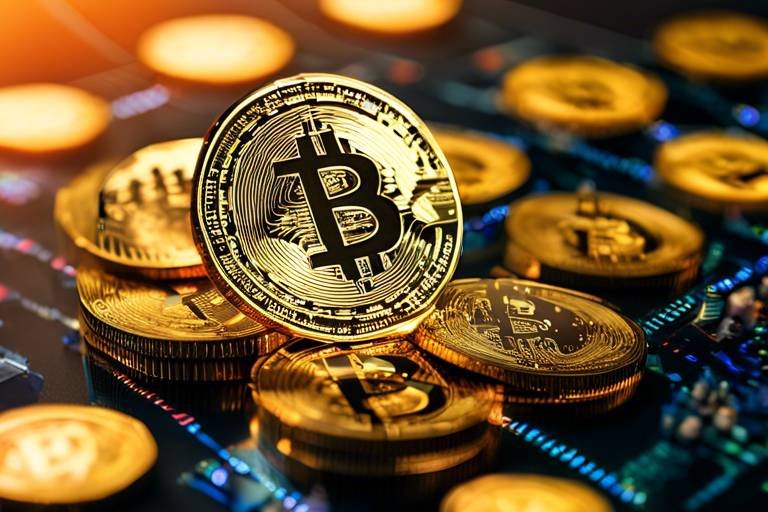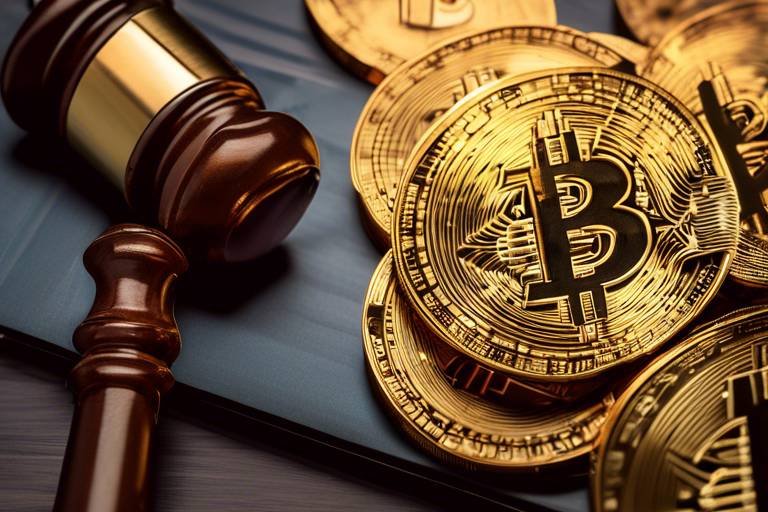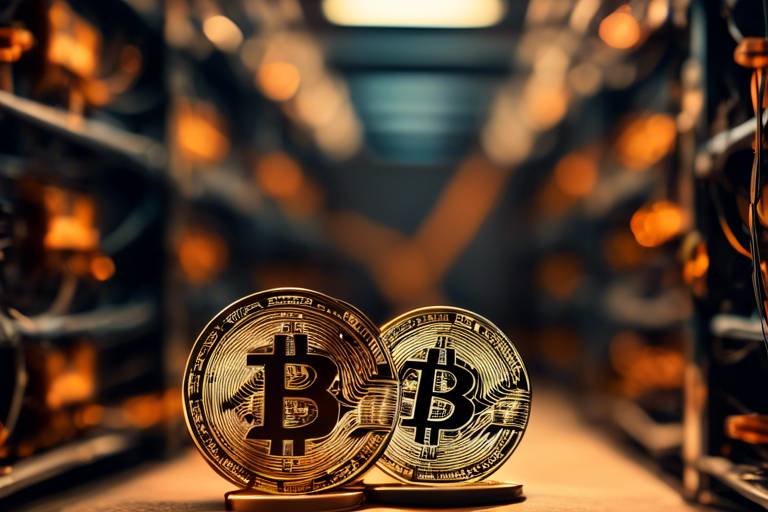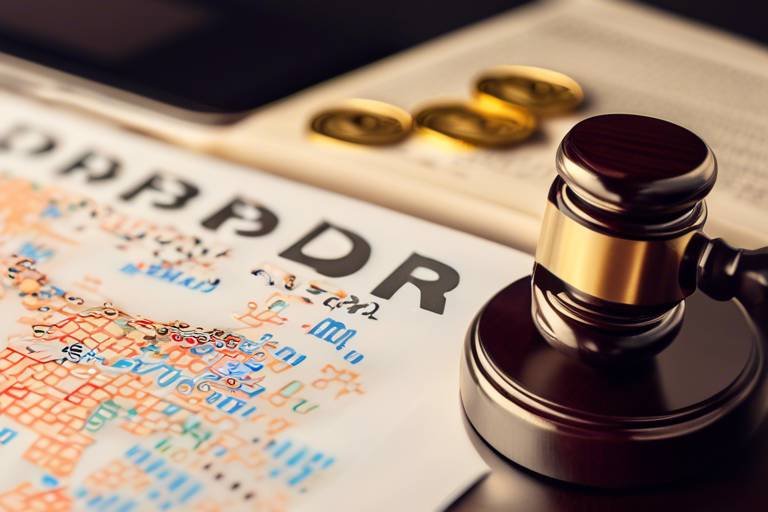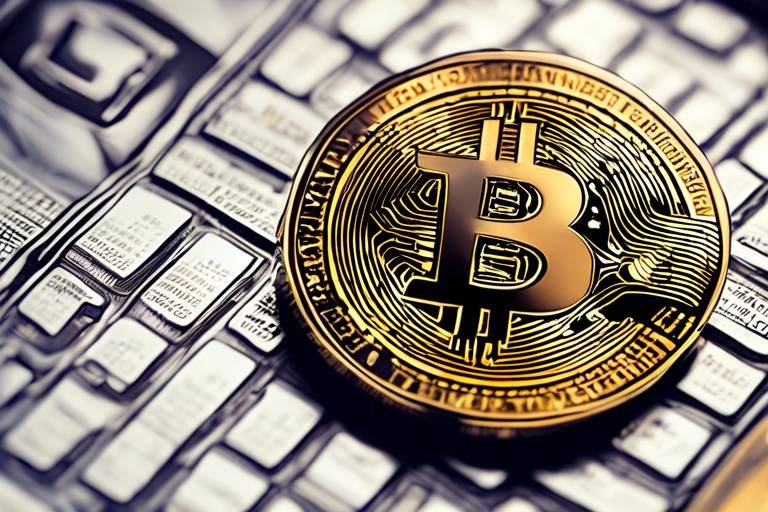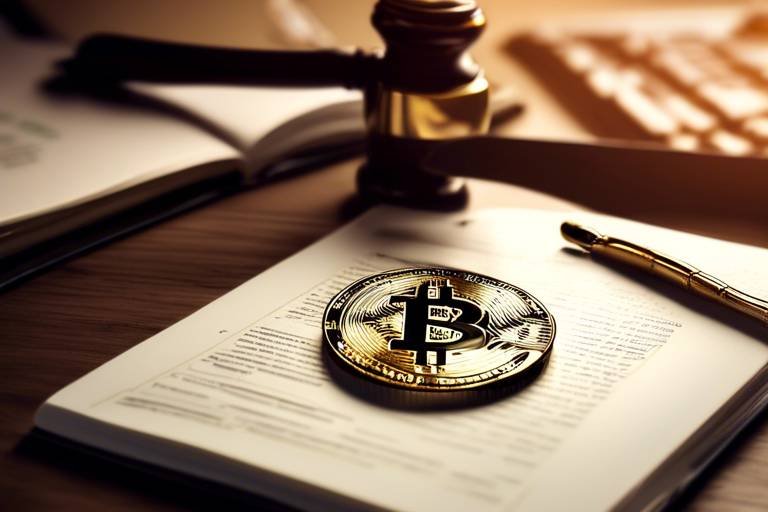Understanding the Legal Framework for Crypto Tokens
The world of cryptocurrency is like a wild roller coaster, filled with twists, turns, and unexpected drops. As we dive into the realm of crypto tokens, it's essential to grasp the intricate legal framework that governs them. This landscape is not just a maze of regulations; it's a dynamic environment that continuously evolves, reflecting the rapid advancements in technology and market practices. So, what exactly are crypto tokens? And why do they need a legal framework? Let's unravel this together.
At its core, a crypto token is a digital asset that represents a unit of value on a blockchain. Unlike cryptocurrencies like Bitcoin, which primarily function as a medium of exchange, tokens can serve a variety of purposes, such as granting access to a service or representing ownership of an asset. However, with great innovation comes great responsibility. The legal implications of these tokens can be profound, affecting not just developers but also investors and users.
One of the most significant challenges in understanding the legal framework for crypto tokens is the lack of uniformity across jurisdictions. Different countries have developed their own regulations, leading to a patchwork of laws that can be confusing for anyone trying to navigate the crypto landscape. For instance, in the United States, the SEC (Securities and Exchange Commission) has taken a firm stance on classifying certain tokens as securities, which subjects them to strict regulatory scrutiny. Conversely, other countries may adopt a more lenient approach, encouraging innovation while still ensuring consumer protection.
As we explore the legal landscape, it's crucial to recognize that the classification of a token—be it a utility token, security token, or stablecoin—significantly affects its regulatory treatment. For instance, utility tokens, which provide access to a specific service or product, often face less stringent regulations compared to security tokens, which are treated as investment contracts. This distinction can have major implications for how developers design their projects and how investors assess their risks.
Moreover, the implications of these regulations extend beyond compliance. They influence the overall trust and adoption of cryptocurrencies. When users feel secure about the legal status of their investments, they are more likely to engage with the market. This trust is essential for the long-term sustainability of the cryptocurrency ecosystem.
As we advance in this article, we will delve deeper into the historical evolution of crypto token regulations, examine the various types of tokens, and discuss the roles of regulatory bodies. But before we jump into those details, let’s take a moment to consider the broader implications of these legal frameworks on the future of cryptocurrency.
- What are crypto tokens? Crypto tokens are digital assets that exist on a blockchain and can serve various purposes, such as representing ownership or granting access to services.
- Why do crypto tokens need regulations? Regulations help protect investors, ensure fair practices, and promote trust in the cryptocurrency market.
- How are utility tokens different from security tokens? Utility tokens provide access to a service or product, while security tokens represent ownership in an asset and are subject to stricter regulations.
- What role do regulatory bodies play? Regulatory bodies oversee compliance, enforce laws, and protect investors, influencing how crypto projects operate.

The Evolution of Crypto Token Regulations
The world of cryptocurrency is like a thrilling roller coaster, constantly twisting and turning, with regulations trying to catch up. The evolution of crypto token regulations has been a fascinating journey, filled with innovations, challenges, and a touch of chaos. It all began in the early 2010s when Bitcoin emerged, setting the stage for a new financial revolution. At that time, regulatory bodies were largely in the dark, unsure of how to approach this novel concept. It was like trying to catch smoke with your bare hands—elusive and unpredictable.
As Bitcoin gained traction, governments around the globe started to realize the need for some form of oversight. In 2014, the Financial Crimes Enforcement Network (FinCEN) in the U.S. issued guidance stating that virtual currencies could be classified as money transmitters. This was a crucial milestone, as it marked the first significant attempt to regulate the burgeoning cryptocurrency market. However, the landscape was still murky, with various countries adopting vastly different approaches. For instance, while countries like Japan embraced crypto with open arms, others, like China, imposed strict bans. This disparity created a fragmented regulatory environment, making it difficult for developers and investors to navigate.
Fast forward to 2017, and the Initial Coin Offering (ICO) craze hit the scene like a tidal wave. Suddenly, everyone wanted to launch their own tokens, and millions of dollars were being raised in mere minutes. This frenzy caught the attention of regulators, who began to scrutinize ICOs for potential fraud and investor protection. In the U.S., the Securities and Exchange Commission (SEC) stepped in, declaring that many tokens were, in fact, securities and thus subject to federal securities laws. This declaration sent shockwaves through the industry, leading to a wave of compliance efforts and, unfortunately, a number of high-profile busts.
By 2020, the regulatory landscape had started to solidify. Countries began to establish clearer frameworks, and organizations like the Financial Action Task Force (FATF) released guidelines for member countries to combat money laundering and terrorist financing in the crypto space. These guidelines prompted many nations to adopt comprehensive regulations, further shaping the industry. However, the challenge remained: how to balance innovation with the need for consumer protection and market integrity.
Today, we stand at a crossroads. The evolution of crypto token regulations is ongoing, with new developments emerging almost daily. Governments are increasingly recognizing the importance of fostering innovation while ensuring that the market remains secure. As we look ahead, it's crucial for all stakeholders—developers, investors, and regulators—to engage in an open dialogue. This collaboration will be key in shaping a regulatory environment that not only protects consumers but also allows the crypto industry to thrive.
In summary, the journey of crypto token regulations has been anything but straightforward. From initial confusion to a more structured approach, the landscape continues to evolve. As we move forward, we can only hope that the regulations will adapt to the rapid pace of technological advancements, ensuring a safe and prosperous environment for everyone involved.
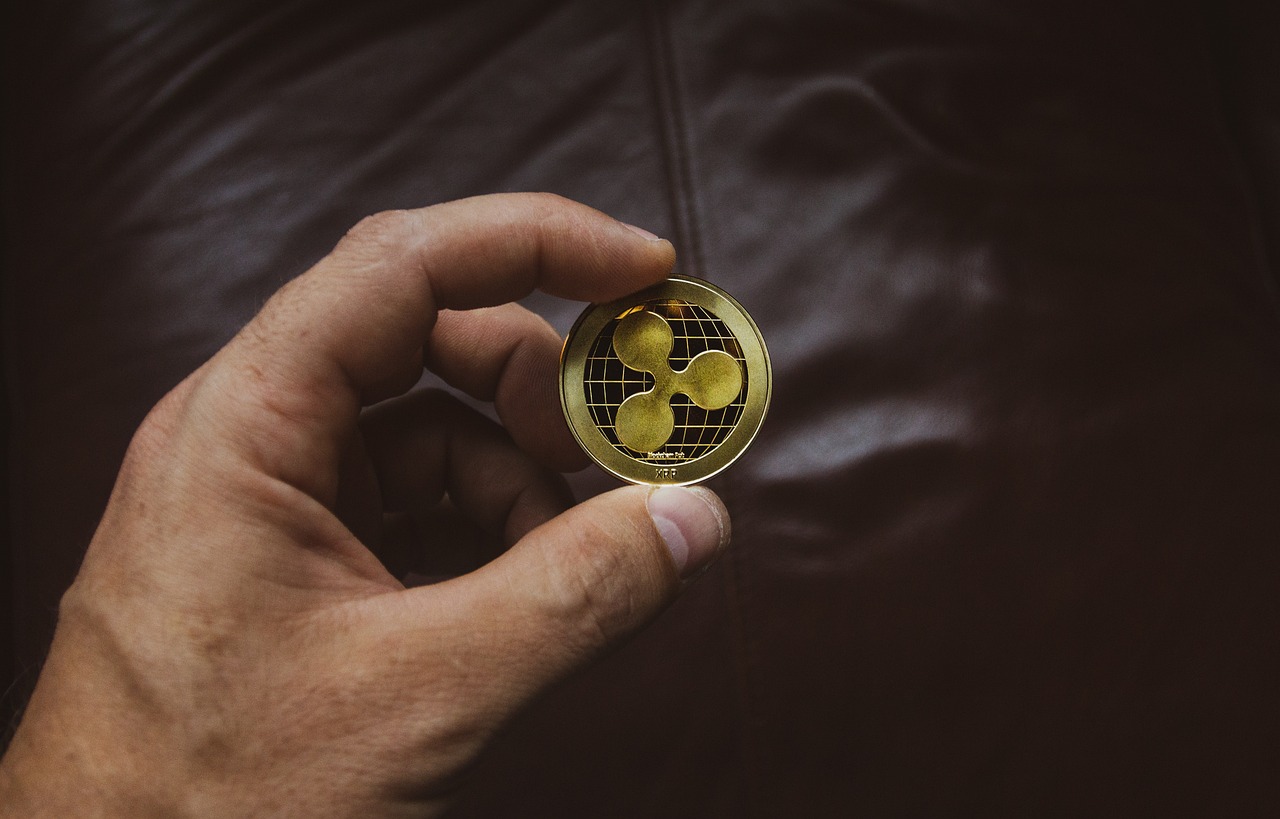
Types of Crypto Tokens
In the vast universe of cryptocurrencies, not all tokens are created equal. Understanding the different types of crypto tokens is crucial for both investors and developers navigating this complex landscape. Each type of token serves a distinct purpose and comes with its own set of legal implications. Broadly speaking, we can categorize crypto tokens into three main types: utility tokens, security tokens, and stablecoins. Each of these categories plays a unique role in the blockchain ecosystem and is subject to different regulatory frameworks.
Utility tokens are designed to provide users with access to a product or service within a blockchain ecosystem. Think of them as the tickets you buy to enter a concert. You purchase a ticket (utility token) to enjoy a specific experience (service or product) offered by the organizers (developers). However, the legal standing of utility tokens can be murky, as they often tread a fine line between being a simple access pass and a security, which can trigger regulatory scrutiny.
Next up, we have security tokens. These tokens represent ownership in an asset, much like traditional stocks represent ownership in a company. Because of this inherent value, security tokens are subject to stringent regulations and compliance requirements. They must adhere to securities laws, which can vary significantly from one jurisdiction to another. This classification can create challenges for developers who wish to tokenize real-world assets while ensuring compliance with the law.
Finally, we arrive at stablecoins. These tokens are pegged to a stable asset, such as a fiat currency like the US dollar. The primary purpose of stablecoins is to provide a stable medium of exchange in the volatile world of cryptocurrencies. They are designed to minimize the price fluctuations that typically accompany other cryptocurrencies, making them an attractive option for investors and traders who want to avoid the wild swings of the market.
| Type of Token | Description | Legal Implications |
|---|---|---|
| Utility Tokens | Access to a product or service within a blockchain ecosystem | May be classified as securities depending on use case |
| Security Tokens | Represent ownership in an asset | Subject to securities regulations |
| Stablecoins | Pecked to stable assets to minimize volatility | Regulatory scrutiny on reserve management |
Understanding these types of tokens is crucial for anyone looking to invest in or develop within the cryptocurrency space. Each type has its unique characteristics and legal considerations, which can significantly affect how they are treated under the law. As the regulatory landscape continues to evolve, staying informed about these distinctions can help mitigate risks for both investors and developers alike.
- What is the primary purpose of utility tokens? Utility tokens are designed to provide access to specific products or services within a blockchain ecosystem.
- How do security tokens differ from utility tokens? Security tokens represent ownership in an asset and are subject to securities regulations, while utility tokens are not typically classified as securities.
- What are stablecoins and why are they important? Stablecoins are pegged to stable assets to minimize price volatility, making them useful for transactions in the cryptocurrency market.

Utility Tokens
are a fascinating aspect of the cryptocurrency world. These digital assets serve a specific purpose within a blockchain ecosystem, granting holders access to a product or service. Imagine walking into a concert and needing a ticket to get in; utility tokens function much like that ticket, allowing users to participate in a platform or use its services. They are not designed as investments but rather as tools for accessing a specific functionality, which is what makes them so unique.
One of the most compelling features of utility tokens is their ability to drive engagement within their respective platforms. For instance, a gaming platform might issue utility tokens that players can use to purchase in-game items, unlock special features, or even vote on game development decisions. This creates a vibrant ecosystem where users are not just passive consumers but active participants, shaping the platform's future.
However, the legal standing of utility tokens is a bit of a gray area. Unlike security tokens, which represent ownership in an asset and are subject to strict regulations, utility tokens often exist in a less regulated environment. This can lead to confusion among users and developers alike. To navigate this landscape, it's essential to understand the legal frameworks that apply to utility tokens, which can vary significantly from one jurisdiction to another.
When it comes to legal considerations, utility tokens must comply with various regulations, particularly regarding consumer protection laws. These laws are designed to safeguard users from fraud and ensure that they are fully informed about the products and services they are purchasing. Unlike security tokens, which are heavily regulated by bodies like the SEC in the United States, utility tokens often fall under less stringent oversight, which can lead to both opportunities and risks.
For developers, this means that while they may have more freedom to innovate, they must also be vigilant about compliance. It’s crucial to clearly define the purpose of the utility token and ensure that it is not marketed as an investment. Misclassifying a utility token could lead to significant legal repercussions, including fines and project shutdowns.
To illustrate the complexities surrounding utility tokens, let's take a look at a few real-world examples. Projects like Ethereum and Binance Coin have successfully navigated the legal landscape while providing valuable services to their users. Ethereum's Ether is used to pay for transactions and computational services on the Ethereum network, while Binance Coin can be used to pay for trading fees on the Binance exchange, providing tangible benefits to holders.
However, not all utility tokens have enjoyed smooth sailing. Some projects have faced legal challenges due to unclear definitions of their tokens' purposes. For instance, the Filecoin project had to clarify its token's utility amidst regulatory scrutiny, emphasizing its role in accessing decentralized storage services rather than as an investment vehicle. This highlights the importance of clear communication and legal compliance in the cryptocurrency space.
In summary, utility tokens play a crucial role in the cryptocurrency ecosystem, allowing users to access services while fostering community engagement. However, the legal landscape is complex and continuously evolving, making it imperative for both users and developers to stay informed about the implications of their token's classification.
- What are utility tokens? Utility tokens are digital assets that provide users with access to a specific product or service within a blockchain ecosystem.
- How do utility tokens differ from security tokens? Utility tokens are primarily used for accessing services, while security tokens represent ownership in an asset and are subject to stricter regulations.
- Are utility tokens regulated? The regulation of utility tokens varies by jurisdiction, but they generally face less oversight compared to security tokens.
- Can utility tokens be used as investments? Utility tokens are not designed as investments, and marketing them as such can lead to legal issues.
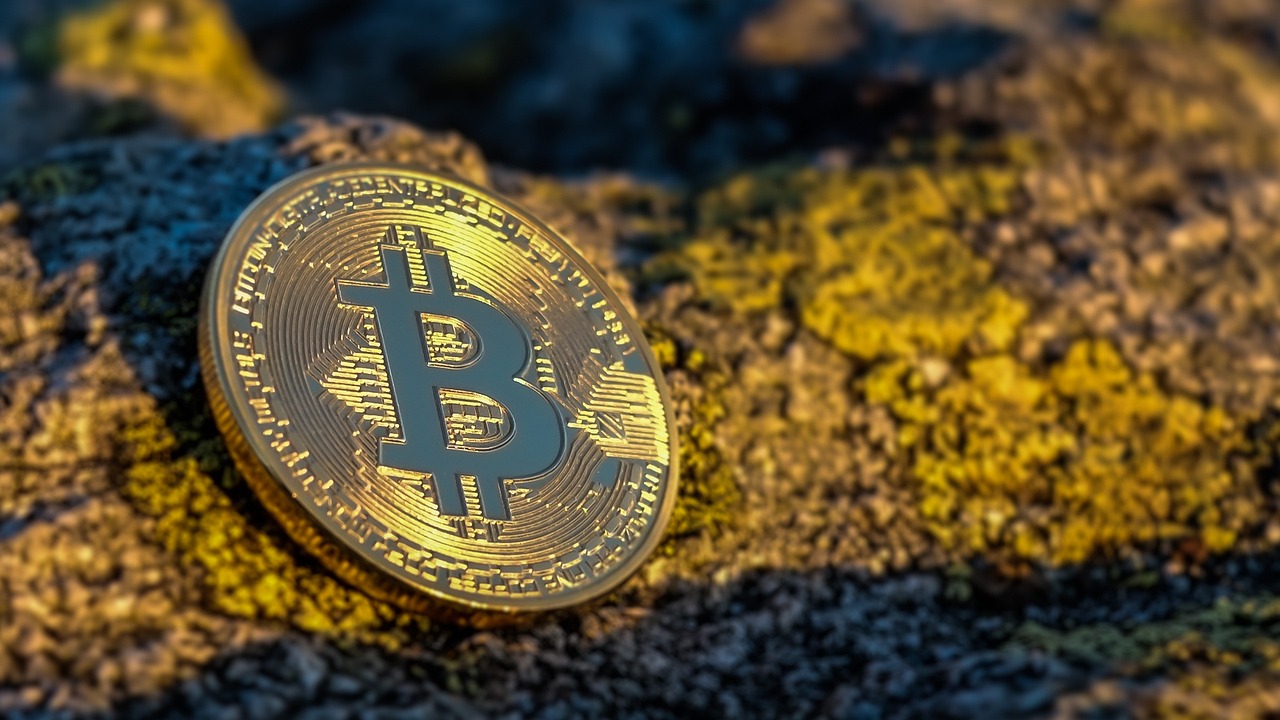
Legal Considerations for Utility Tokens
When it comes to utility tokens, navigating the legal landscape can feel like walking through a maze. These tokens are designed to provide users with access to a product or service within a specific blockchain ecosystem. However, their legal standing can vary significantly based on jurisdiction and the specific characteristics of the token itself. It's essential to understand that while utility tokens are often marketed as non-securities, their classification can sometimes blur the lines, leading to potential legal complications.
One of the primary legal considerations for utility tokens revolves around consumer protection laws. Just like any other product or service, utility tokens must comply with regulations that ensure users are not misled or defrauded. This means that developers need to be transparent about the functionalities of their tokens and the risks involved. Failure to provide clear and accurate information can lead to regulatory scrutiny and potential legal action.
Moreover, the legal frameworks applicable to utility tokens often differ from those governing security tokens. For instance, utility tokens typically do not grant ownership rights or profit-sharing opportunities, which are characteristic of securities. However, the Howey Test, a legal test used in the United States to determine whether a transaction qualifies as an investment contract, can sometimes categorize a utility token as a security if it meets certain criteria. This creates a precarious situation for developers who may believe they are in the clear.
To illustrate this complexity, consider the following table that summarizes key distinctions between utility tokens and security tokens:
| Feature | Utility Tokens | Security Tokens |
|---|---|---|
| Purpose | Access to a product/service | Ownership in an asset |
| Regulatory Oversight | Less stringent | Subject to securities regulations |
| Profit Sharing | No | Yes |
| Legal Classification | Often non-security | Often classified as security |
In addition to consumer protection laws, developers of utility tokens must also consider anti-money laundering (AML) and know your customer (KYC) regulations. These measures are crucial for preventing illicit activities and ensuring compliance with local laws. By implementing robust KYC and AML practices, developers can not only protect their projects but also enhance their credibility in the eyes of regulators and investors alike.
As the regulatory environment continues to evolve, staying informed about changes in legislation is vital for anyone involved in the crypto space. Developers must be proactive in adapting their business models to ensure compliance, which may include seeking legal counsel or engaging with regulatory bodies early in the development process. The consequences of neglecting these legal considerations can be severe, ranging from hefty fines to complete shutdowns of projects.
In conclusion, while utility tokens present exciting opportunities within the blockchain ecosystem, they also come with a set of legal challenges that cannot be ignored. By understanding the implications of consumer protection laws, the distinction between utility and security tokens, and the importance of AML and KYC regulations, developers can navigate this complex landscape more effectively. It’s not just about creating innovative technology; it’s about ensuring that innovation aligns with the law.
- What are utility tokens? Utility tokens are digital assets that provide users with access to a product or service within a blockchain ecosystem.
- Are utility tokens considered securities? Not typically, but they can be classified as securities if they meet specific criteria outlined by regulations, such as the Howey Test.
- What legal considerations should developers keep in mind? Developers should consider consumer protection laws, AML and KYC regulations, and the potential for their token to be classified as a security.
- How can developers ensure compliance? By staying informed about changes in regulations and seeking legal counsel, developers can adapt their business models to meet legal requirements.

Case Studies of Utility Tokens
To truly grasp the complexities and legal nuances surrounding utility tokens, it's essential to dive into some real-world examples. These case studies not only illustrate how various projects have successfully navigated the often murky waters of regulation, but they also provide invaluable lessons for both developers and investors in the cryptocurrency space.
One of the most notable cases is that of Filecoin. Launched in 2017, Filecoin aimed to create a decentralized storage network. The project raised over $257 million in its initial coin offering (ICO), making it one of the largest at that time. However, the legal scrutiny that followed was intense. The Securities and Exchange Commission (SEC) scrutinized Filecoin's ICO, questioning whether the tokens sold were securities. In response, the team emphasized that Filecoin tokens were utility tokens designed to be used within their network for storage services. This distinction was crucial in helping them navigate regulatory challenges.
Another intriguing case is the Basic Attention Token (BAT). BAT is integrated into the Brave browser, rewarding users for their attention while browsing the web. The developers positioned BAT as a utility token meant to enhance user experience and provide advertisers with a more efficient way to reach their audience. Their legal strategy involved ensuring compliance with consumer protection laws while clearly communicating the token's utility to users. This proactive approach has allowed BAT to thrive in a competitive market.
Moreover, we cannot overlook the Ethereum network, which introduced the concept of utility tokens through its ERC-20 standard. Tokens like Chainlink (LINK) and Uniswap (UNI) have emerged from this ecosystem, each with unique functionalities and utilities. These tokens are often used for specific services within their respective platforms, but they also face ongoing scrutiny regarding their legal status. The Ethereum Foundation has taken steps to clarify the utility of these tokens, which has helped mitigate some regulatory risks.
While these case studies highlight successful navigation of the regulatory landscape, they also underscore the importance of transparency and clear communication. Developers must be vigilant in articulating the purpose and functionality of their tokens to avoid being classified as securities inadvertently. Additionally, understanding the legal frameworks in different jurisdictions is vital, as regulations can vary significantly across borders.
In summary, the journey of utility tokens is fraught with challenges, but the successes of projects like Filecoin, BAT, and those built on Ethereum demonstrate that with careful planning and adherence to legal standards, developers can create valuable ecosystems that benefit users while staying compliant. As the market continues to evolve, these case studies serve as a roadmap for future projects aiming to harness the power of utility tokens.
- What are utility tokens? Utility tokens are digital assets that provide users with access to a product or service within a blockchain ecosystem. They are not designed to function as investments.
- How do utility tokens differ from security tokens? Utility tokens are primarily used for access to services, while security tokens represent ownership in an asset and are subject to securities regulations.
- What are the legal implications of issuing utility tokens? Issuing utility tokens can involve compliance with consumer protection laws and ensuring that the tokens do not inadvertently classify as securities.

Security Tokens
Security tokens are a fascinating and essential component of the cryptocurrency landscape, representing ownership in a real-world asset. Unlike their counterparts, utility tokens, which provide access to a service or product within a blockchain ecosystem, security tokens are subject to stringent regulations. This distinction is crucial because it determines how these tokens are treated under the law. Just imagine a traditional stock—security tokens function similarly, allowing investors to gain fractional ownership of an asset, whether it's real estate, equity in a company, or even art. The legal implications of this ownership are profound, as they bring a layer of protection for investors but also impose compliance challenges for developers.
One of the primary legal requirements for security tokens is that they must comply with existing securities regulations. In the United States, for instance, the Securities and Exchange Commission (SEC) plays a pivotal role in overseeing these tokens. This means that any project aiming to issue security tokens must navigate a complex web of regulations that govern how these tokens can be marketed and sold. Developers must ensure that their tokens are properly registered or qualify for an exemption, which can be a daunting task given the evolving nature of these laws.
Moreover, the compliance landscape for security tokens is not just limited to the SEC. Various regulatory bodies around the world have begun to take notice of security tokens, each with its own set of rules and guidelines. For example, the Commodity Futures Trading Commission (CFTC) may also have jurisdiction over certain types of security tokens, especially if they are linked to derivatives or commodities. This multi-layered regulatory environment can create confusion and uncertainty for both developers and investors, making it imperative for all parties involved to stay informed and compliant.
To illustrate the real-world implications of these regulations, let’s take a look at some notable case studies. For instance, the case of Telegram and its failed Initial Coin Offering (ICO) serves as a cautionary tale. The SEC halted Telegram's plan to launch its blockchain network, citing that the tokens were unregistered securities. This led to a significant loss of investor confidence and highlighted the importance of adhering to regulatory standards. On the other hand, platforms like Polymath have successfully navigated these waters by providing a framework for compliant security token offerings, demonstrating that with the right approach, developers can thrive in this regulated environment.
As the market continues to mature, it’s clear that security tokens will play a vital role in the future of investing. They offer a blend of traditional asset ownership with the innovative advantages of blockchain technology. However, the path forward is fraught with challenges, and both investors and developers must remain vigilant about the evolving legal landscape. The future of security tokens hinges on how well they can adapt to regulatory changes while still delivering value to their users.
- What are security tokens? Security tokens are digital representations of ownership in an asset, subject to securities regulations.
- How do security tokens differ from utility tokens? Security tokens provide ownership rights and are regulated, while utility tokens grant access to services or products within a blockchain ecosystem.
- What regulatory bodies oversee security tokens? In the U.S., the SEC and CFTC play significant roles, while other countries have their own regulatory frameworks.
- Can security tokens be traded? Yes, security tokens can be traded on regulated exchanges, provided they comply with relevant securities laws.

Regulatory Bodies and Their Roles
The world of cryptocurrency is not just a digital playground; it's also a complex web of regulations, overseen by various regulatory bodies that play crucial roles in shaping the industry. Understanding these entities is essential for anyone involved in crypto tokens, be it investors, developers, or enthusiasts. The primary regulatory bodies include the U.S. Securities and Exchange Commission (SEC), the Commodity Futures Trading Commission (CFTC), and several international counterparts. Each of these organizations has distinct responsibilities and approaches to regulation, which can significantly impact how crypto tokens are treated under the law.
The SEC, for instance, is primarily responsible for protecting investors and maintaining fair, orderly, and efficient markets. They focus on ensuring that any token that qualifies as a security is registered and complies with federal securities laws. This means that many Initial Coin Offerings (ICOs) have come under scrutiny as the SEC evaluates whether they should be classified as securities. The implications of this classification can be profound, affecting everything from how tokens are marketed to the legal obligations of their creators.
On the other hand, the CFTC oversees derivatives markets, including futures and options related to cryptocurrencies. Their role is essential in ensuring that trading practices are fair and transparent, particularly as crypto assets become more intertwined with traditional financial markets. The CFTC has also classified certain cryptocurrencies as commodities, which adds another layer of complexity to their regulation and oversight.
Internationally, regulatory bodies like the Financial Action Task Force (FATF) and the European Securities and Markets Authority (ESMA) are also influential. The FATF, for example, sets global standards for combating money laundering and terrorist financing, which have implications for how crypto transactions are monitored and regulated across borders. Meanwhile, ESMA provides guidance on how EU member states should approach the regulation of crypto assets, promoting consistency and clarity in the market.
Understanding the interplay between these regulatory bodies can be likened to navigating a maze. Each organization has its own set of rules and guiding principles, and the landscape is continually evolving. For developers and investors, staying informed about these changes is not just beneficial—it's essential. Failure to comply with regulations can lead to severe penalties, including hefty fines and restrictions on trading.
As the cryptocurrency market matures, we can expect these regulatory bodies to adapt and refine their approaches. The ongoing dialogue between regulators and the crypto community will likely lead to new frameworks that balance innovation with consumer protection. This evolution is necessary to foster a secure environment for all participants in the crypto space.
- What is the role of the SEC in cryptocurrency regulation?
The SEC regulates securities and ensures that any token classified as a security complies with federal laws. - How does the CFTC differ from the SEC?
The CFTC focuses on derivatives and commodities, overseeing futures and options related to cryptocurrencies. - Are there international regulations for crypto tokens?
Yes, organizations like the FATF and ESMA provide guidelines that influence how cryptocurrencies are regulated globally. - What happens if a token is deemed a security?
If classified as a security, the token must adhere to strict registration and compliance requirements, which can affect its marketability.
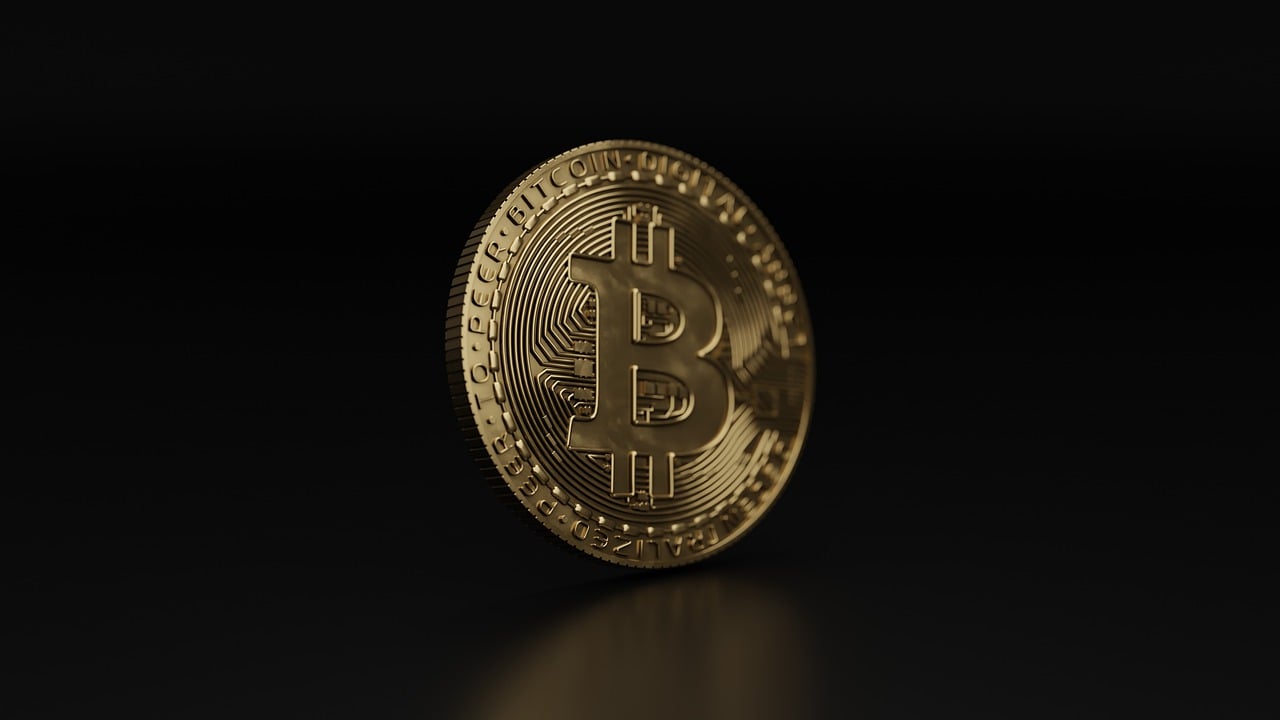
Impact of Regulatory Actions
The impact of regulatory actions on the cryptocurrency landscape is akin to a ripple effect in a pond; when a stone is thrown, the ripples spread far and wide, affecting everything in their path. Regulatory bodies, such as the SEC (Securities and Exchange Commission) and CFTC (Commodity Futures Trading Commission), have taken a proactive stance in overseeing the crypto market, and their decisions can significantly influence the operational dynamics of crypto projects. For instance, when the SEC decides to classify certain tokens as securities, it imposes stringent compliance requirements on the issuers, which can lead to a complete overhaul of their business models.
One notable example is the case of Ripple Labs, which found itself embroiled in a legal battle with the SEC over whether its XRP token should be classified as a security. This legal scrutiny not only affected Ripple’s operations but also sent shockwaves throughout the crypto community, leading to a temporary decline in XRP’s value and forcing other projects to reevaluate their token classifications. This situation highlights how regulatory actions can create uncertainty and volatility in the market, prompting investors to tread carefully.
Moreover, the consequences of regulatory actions extend beyond individual projects; they can reshape the entire industry. For example, when regulations tighten, projects may find it challenging to secure funding, as investors become wary of potential legal repercussions. The table below illustrates some key regulatory actions and their impacts on the crypto market:
| Regulatory Action | Impact |
|---|---|
| SEC's Classification of Tokens | Increased compliance costs for projects; potential delisting from exchanges. |
| CFTC's Oversight on Futures Trading | Legitimization of crypto futures; increased institutional investment. |
| International Regulatory Frameworks | Creation of a more unified global market; varying compliance standards. |
As we delve deeper into the implications of regulatory actions, it's essential to consider how these decisions can also foster innovation. While regulations may seem restrictive, they can encourage developers to create more secure and compliant projects, ultimately benefiting consumers. For instance, projects that adhere to regulatory standards often gain a competitive edge, as they build trust with users and investors. This trust is invaluable in an industry often marred by scams and fraud.
In conclusion, the impact of regulatory actions on the cryptocurrency market is multifaceted. It can create challenges for individual projects, influence market trends, and even foster innovation. As the regulatory landscape continues to evolve, stakeholders must remain vigilant and adaptable, ready to navigate the complexities that lie ahead.
- What are the main regulatory bodies overseeing cryptocurrency?
The main regulatory bodies include the SEC, CFTC, and various international counterparts, each playing a role in ensuring market integrity and protecting investors.
- How do regulatory actions affect the value of crypto tokens?
Regulatory actions can lead to increased compliance costs, uncertainty, and potential legal challenges, which may negatively impact the value of crypto tokens.
- Can regulatory actions lead to innovation in the crypto space?
Yes, while regulations may impose restrictions, they can also encourage developers to create more secure and compliant projects, fostering innovation.

Future Trends in Regulation
As we look ahead, the world of crypto tokens is poised for remarkable transformation, particularly in the realm of regulation. The rapid evolution of blockchain technology and the increasing adoption of cryptocurrencies by mainstream financial institutions signal that regulatory frameworks will need to adapt swiftly to keep pace. So, what can we expect in the coming years?
Firstly, we might witness a trend towards global harmonization of regulations. Currently, different countries have varying approaches to crypto token regulation, which can create confusion and hinder innovation. For instance, while the United States has a more stringent regulatory environment, countries like Switzerland and Singapore have adopted a more welcoming stance. This disparity can lead to regulatory arbitrage, where companies choose to operate in jurisdictions with looser rules. As international cooperation increases, we could see a push for a more standardized framework that promotes both innovation and consumer protection.
Moreover, the rise of decentralized finance (DeFi) platforms is likely to attract regulatory scrutiny. These platforms operate without traditional intermediaries, which raises questions about accountability and consumer safety. Regulators are expected to focus on establishing guidelines that ensure transparency and security while allowing for the innovative potential of DeFi to flourish. This could lead to the introduction of new compliance requirements tailored specifically for DeFi protocols, ensuring they adhere to anti-money laundering (AML) and know-your-customer (KYC) regulations.
Another significant trend might be the increased focus on consumer protection. As more individuals invest in crypto tokens, the need for safeguarding investors becomes paramount. Regulators may implement stricter guidelines regarding disclosures, advertising, and the overall marketing of crypto products. This could help mitigate risks associated with fraud and misinformation, fostering a safer environment for investors. Additionally, we may see the establishment of dedicated regulatory bodies specifically focused on the cryptocurrency sector, similar to the way the SEC oversees securities.
Finally, we should anticipate advancements in technology that will aid regulatory compliance. The integration of blockchain analytics tools can provide regulators with insights into transaction patterns and help identify suspicious activities. This technological evolution will not only enhance compliance efforts but also improve the overall transparency of the cryptocurrency market. As regulators become more tech-savvy, they may leverage these tools to streamline the enforcement of regulations, ensuring a more efficient regulatory process.
In summary, the future of crypto token regulation is likely to be characterized by global harmonization, enhanced consumer protection, targeted compliance measures for DeFi, and the adoption of advanced technologies. As the landscape evolves, both investors and developers will need to stay informed and agile to navigate the shifting regulatory terrain. The ongoing dialogue between regulators and the crypto community will be crucial in shaping a balanced approach that fosters innovation while ensuring safety and compliance.
- What are crypto tokens? Crypto tokens are digital assets created on a blockchain that can represent various forms of value or utility.
- How do regulations affect crypto tokens? Regulations can influence the legality, trading, and usage of crypto tokens, impacting both investors and developers.
- What is the difference between utility tokens and security tokens? Utility tokens provide access to a service or product, while security tokens represent ownership in an asset and are subject to securities regulations.
- Why is consumer protection important in the crypto space? With the rise of crypto investments, protecting consumers from fraud and misinformation is crucial for building trust in the market.
Frequently Asked Questions
- What are crypto tokens?
Crypto tokens are digital assets created on a blockchain that can represent various forms of value or utility. They can be used for transactions, access to services, or even represent ownership in an underlying asset. Understanding their function is crucial for anyone looking to invest or develop in the crypto space.
- How do regulations impact crypto tokens?
Regulations play a significant role in shaping the crypto token landscape. They determine how tokens are classified, whether as utility or security tokens, and dictate the compliance requirements for developers and investors. This can affect everything from fundraising methods to the legal protections afforded to users.
- What is the difference between utility tokens and security tokens?
Utility tokens provide access to a product or service within a blockchain ecosystem, while security tokens represent ownership in an asset and are subject to securities laws. This distinction is crucial as it influences how each type of token is regulated and the legal implications for both creators and users.
- What regulatory bodies oversee crypto tokens?
In the United States, the primary regulatory bodies include the Securities and Exchange Commission (SEC) and the Commodity Futures Trading Commission (CFTC). Internationally, various countries have their own regulatory frameworks, which can complicate compliance for global crypto projects.
- What are the potential consequences of regulatory actions?
Regulatory actions can lead to significant consequences for crypto projects, including fines, forced compliance changes, or even shutdowns. These actions can also impact investor confidence and the overall market, making it vital for projects to stay informed and compliant with applicable laws.
- Are there any upcoming trends in crypto token regulation?
As the cryptocurrency market evolves, we can expect ongoing changes in regulations. This could involve stricter compliance measures, clearer definitions of token classifications, or new frameworks that accommodate emerging technologies. Staying ahead of these trends is essential for anyone involved in the crypto space.






